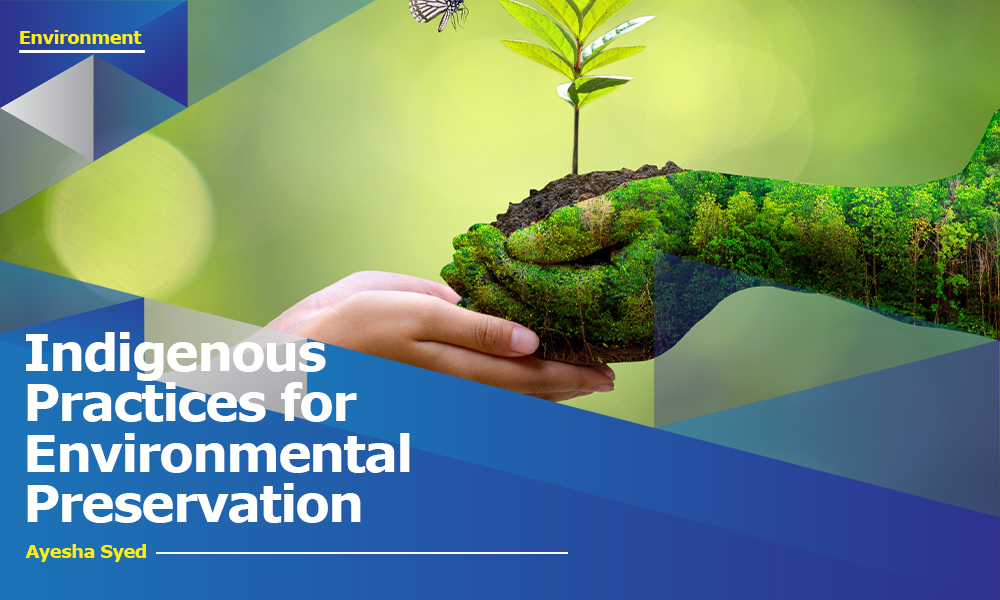Testimonial

According to Amnesty International, there are over 5,000 distinct Indigenous people worldwide, or 476 million individuals, constituting 6.2% of the global population. These communities are spread across over 90 countries and speak over 4,000 languages.
For years, we have read about the discrimination against the Indigenous communities. Despite inhabiting a significant part of the world, Indigenous people have consistently failed to get their fair share of the land and proper rights. Several organisations are working to protect these communities. These communities matter not only because they are a part of the origins of specific lands but also because of their knowledge about the lands they manage. The root cause of conflict between them and the authorities arises from converting natural habitats into World Heritage Sites. Once a location is marked off as a World Heritage Site, it falls under the jurisdiction of UNESCO. This leads to the influx of external personnel and equipment, disrupting the lives of the communities.
As landowners, Indigenous communities know the tactics to conserve and preserve their lands. This knowledge of protecting biodiversity has been passed down to them through experiments and experiences of their ancestors. According to a report by the ICCA Consortium, 21% of the global land is protected only because of the conservation practices of Indigenous people. Despite some loss of forest land on Indigenous-managed land since 2000, the rate is still lower than that of non-Indigenous-managed areas. Furthermore, deforestation within Indigenous-managed lands is often done without the consent of Indigenous peoples. Tragically, from 2009-2019, many members of Indigenous communities have been murdered due to conflict over land use in the Amazon region.
The point of the matter is the loss of land, and the deterioration of the environment is happening at an extremely fast pace, even in areas managed by Indigenous communities. However, the loss is notably lesser in Indigenous-managed territories than those under various authorities. So, what actions are the Indigenous communities taking to safeguard the environment? Let’s take a look:
Traditional Ecological Knowledge
Indigenous communities deeply understand the lands they own, including the behaviours of plants, animals, and natural processes. This Traditional Ecological Knowledge (TEK) encompasses various insights, such as seasonal patterns, habitat preferences, medicinal properties of plants and other natural resources, and indicators of environmental change.
One of the integral elements of Traditional Ecological Knowledge is the Indigenous belief that humans are a part of nature. This perspective emphasises sustainability and living in harmony with the planet. The world’s capitalistic tendencies have left it bereft of the natural resources that it once offered. To restore the balance we once had, we must go back to mindfully taking what is necessary and leaving the rest so that biodiversity can regain its balance.
Traditional Ecological Knowledge is imparted orally through storytelling, ceremonies, and hands-on experiences. This knowledge is invaluable for monitoring biodiversity and recognising ecological imbalances or threats.
Sustainable Land Management Practices
Indigenous people have developed sustainable land management practices prioritising biodiversity conservation and meeting human needs. These practices are customised according to specific ecosystems’ demands and governed by principles of strength, adaptability, and long-term stewardship.
Among these practices is agroforestry, which combines agricultural and forestry techniques to maximise land use efficiency. Additionally, rotational agriculture, traditional seed-saving techniques, and community-managed forests are other practices that help preserve biodiversity. These practices also enhance soil fertility, water retention, and habitat diversity.
Controlled burning, cultural burning or firestick farming intentionally sets small, controlled fires in targeted areas during dry seasons. Many indigenous cultures have an in-depth understanding of fire ecology and use controlled burning as a strategic tool. This technique helps regenerate forests, stimulate plant growth, and reduce the risk of uncontrolled forest fires.
Wildfires pose a great threat to biodiversity in and around forests. Unexpected wildfires destroy flora and fauna, and it takes years for these areas to regain their natural balance.
Controlled Burning Technique
Controlled burning, cultural burning or firestick farming intentionally sets small, controlled fires in targeted areas during dry seasons. Many indigenous cultures have an in-depth understanding of fire ecology and use controlled burning as a strategic tool. This technique helps regenerate forests, stimulate plant growth, and reduce the risk of uncontrolled forest fires.
Wildfires pose a great threat to biodiversity in and around forests. Unexpected wildfires destroy flora and fauna, and it takes years for these areas to regain their natural balance.
Climate Change Adaptation
Indigenous knowledge systems are highly adaptive and resilient when faced with environmental change. They have developed strategies for coping with climate issues, such as diversified livelihoods, flexible land use practices, and traditional ecological calendars. A study examined and predicted seasonal rainfall changes by applying Indigenous knowledge. It was found that changes in vegetation, animal behaviour, and other atmospheric indicators were used to monitor rainfall changes.
Indigenous knowledge can inform climate change adaptation efforts by providing insights into local vulnerabilities, adaptive strategies, and resilience-building measures that benefit indigenous and non-indigenous communities.
Melipona Bees Conservation, Amazon
Collaborative Conservation Initiatives
Honeybees are an important part of how the world looks today. Both the bees and their honey are natural gifts that are an integral component of the ecosystems, benefiting both nature and humanity. Among the diverse bee species, Melipona bees stand out as unique. They are tiny and stingless, yet their honey has been used for medicinal purposes by the Indigenous communities in the Amazon for years. However, like all the other bee species, Meliponas face extreme threats because of deforestation, pesticide use, and climate change.
In collaboration with Conservation International’s fellowship programme for Amazonia Indigenous Women, the Indigenous women learn about traditional beekeeping practices and improve their technical skills to safeguard the Melipona population. This fellowship programme provides them with funds, training, and networking opportunities so that they can lead conservation in their areas.
Yaeda Valley Community-Led Conservation, Tanzania
The Yaeda Valley in northern Tanzania is the ancestral home of the Hadza Indigenous community. The community has been practising sustainable hunting and gathering for thousands of years. The community has collaborated with the Tanzania Land Conservation Trust (TLCT) and Carbon Tanzania to create a community-led conservation area to protect their traditional lands and preserve biodiversity.
The project combines indigenous knowledge with scientific research to monitor wildlife populations and sustain the management of natural resources. The Hadza community actively participates in the decision-making process. They also ensure conservation efforts align with their cultural values and livelihood needs.
Conclusion
Indigenous communities possess immense knowledge of their lands, acquired over generations of intimate connection and stewardship. As the original inhabitants of these lands, they should have the right to manage them according to their cultural and traditional practices.
Authorities must actively work to bridge the gap and tensions between Indigenous communities and external stakeholders. Given the alarming rate at which the world’s natural resources are depleting, collaboration with Indigenous communities is beneficial and essential. By using their techniques and traditions, we can help improve biodiversity.
References
Berkes, F. (2009). Indigenous Ways of Knowing and the Study of Environmental Change. Journal of the Royal Society of New Zealand, 39, 151-156.
https://doi.org/10.1080/03014220909510568
ICCA Consortium (2021). Territories of Life: 2021 Report. ICCA Consortium: worldwide. Available at: report.territoriesoflife.org.
Salomé Gómez-Upegui 2021, Down to Earth, Vox, accessed 14 May 2024, < https://www.student.unsw.edu.au/how-do-i-cite-electronic-sources>
Indigenous People’s Rights n.d., accessed 14 May 2024 < https://www.amnesty.org/en/what-we-do/indigenous-peoples/>
Mary Kate McCoy 2023, 3 ways indigenous knowledge protects nature, Conservation International, accessed 14 May 2024, <https://www.conservation.org/blog/3-ways-indigenous-knowledge-protects-nature>


0 Comments